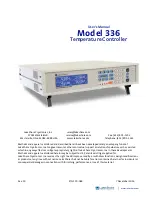
IGS-NT-BC, SW Version 1.2.0,
©ComAp – January 2019
IGS-NT-BC-1.2.0 Reference Guide.PDF
23
1.2.1. Running hours equalization (RHE)
Each particular bank counts it´s run hours as average value of run hours of subordinated gen-sets. This
value is used in the function of run hours equalization between the banks.
The bank priorities are automatically swapped to balance engine running hours. In other words, the
controllers compare Run hours of each bank and select banks to run in order to maintain constant maximal
difference of running hours.
Activation:
Pwr management:
#
PriorAutoSwap
= RUN HOURS EQU
Important setpoints:
#RunHrsMaxDiff, Priority ctrl, Control group
The actual values to be considered by the Running Hours Equalization are calculated from the following
formula:
1.2.2. Load demand swap (LDS)
– different sized banks
If there are banks of different size at the site, it may be required always to run such banks that best fit to the
actual load demand. The
Load demand swap
function is intended for this purpose and can control up to 3
banks. Up to three running banks
can be swapped based on load demand (e.g. one “small” engine may run
on “small” load and swaps to another one, “big” bank that runs when load increases). This function is
available
only in combination with absolute power management
.
Activation:
Pwr management:#PriorAutoSwap
= LD DEMAND SWAP
Important setpoints:
#PwrBandContr1
,
#PwrBandContr2
,
#PwrBandContr3, #PwrBandContr4
,
#PwrBandChngDlUp, #PwrBandChngDlDn, Load reserve setpoints (depending on selected load reserve
set), Priority ctrl, Control group.
The banks must have addresses 1, 2 and 3. There are four power bands; each of them has adjusted specific
combination of banks that run within it. Power bands are adjusted by setpoints
#PwrBandContr1,
#PwrBandContr2, #PwrBandContr3
and
#PwrBandContr4
. The load levels of the power bands are defined
by sum of available nominal powers of banks that are adjusted to run in each particular power band, and the
load reserve for start. The combinations of banks must be created in the way the total nominal power of the
Power band #1 < #2 < #3 < #4. If the load demand is above the power band #4 then all banks are ordered to
run. In fact there is power band #5, which has fixedly selected all the banks to run.
The currently active power band is given by the actual load demand. If the load demand changes and gets
out from the current power band, the next/previous power band is activated with delay
Pwr management:
#PwrBnChngDlUp
or
Pwr management: #PwrBnChngDlDn
depending on the direction of the change. The
banks which are included in the current power band get engine priority 1, the others get priority 32. The
setpoint
Pwr management: Priority
is not influenced by this function.
Virtual values “engine priority” are
used.
N
OTE
:
If the power band change delays (i.e.
Pwr management:
#PwrBnChngDlUp
and
Pwr management: #PwrBnChngDlDn
) are adjusted to higher values than
Pwr management: #NextStrt del
and
Pwr management: #OverldNextDel
setpoints then it may occur, that also the gen-sets not belonging to
the current power band will start. This is normal and it prevents the system from overloading. Priority
setpoints are not actually changed. Virtual values “engine priority” are used.
1.3. Minimum Running Power
Minimum Running Power function is used to adjust a minimum value of the sum of nominal power of all
running banks (and their subordinated gen-sets). If the function is active, then the gen-sets would not be
stopped, although the reserve for stop is fulfilled.
There are 3 different
MinRunPower
setpoints.
•
#MinRunPower 1
considered if LBI
MinRun power 1
activated
•
#MinRunPower 2
considered if LBI
MinRun power 2
activated
•
#MinRunPower 3
considered if LBI
MinRun power 3
activated
















































